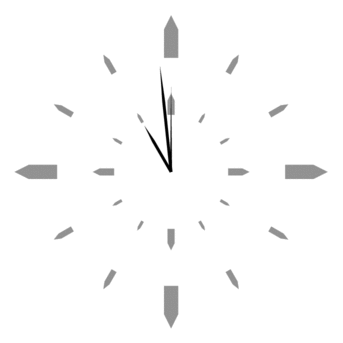Search the Community
Showing results for tags 'webview2'.
-
IMPORTANT! Scripts changed! See P.S. 2 below for script-breaking changes. Although I think the best way to use WebView2 in AutoIt would be to complete and use the work started by @LarsJ in this other @mLipok's topic, now it is possible to use WebView2 in AutoIt in a much simpler way. This is possible thanks to this ocx control and thanks to @Danyfirex for his decisive contribution. Now we can easily start embedding one or more WebView2 controls in our GUI in AutoIt. What we need is: the OrdoWebView2.ocx control and the \OrdoRC6 folder. These two are installed together with other programs (in the C:\Program Files (x86)\OrdoWebView2Control folder) by running the OrdoWebView2ActiveXControl.2.0.9.exe program downloadable from this link: https://freeware.ordoconcept.net/OrdoWebview2.php by clicking on "Download OrdoWebView2 SDK" at the bottom of the screen. Or, more simply, you can find them directly attached to this post by @Danyfirex. As explained in this post on VBForums (https://www.vbforums.com/showthread.php?899415-OrdoWebview2-ActiveX-WebView2-Browser-Control-(Replacement-of-the-MS-browser-control)&p=5651133&viewfull=1#post5651133): "On the latest versions of Windows 10 and Windows 11, only the following components are needed: OrdoWebView2.ocx OrdoRC6 folder and its contents, in the same directory as OrdoWebView2.ocx Finally, you need to register OrdoWebView2.ocx by following these three steps: Open a DOS prompt with administrative rights Navigate to the folder containing the OrdoWebView2.ocx file Type and execute the following command: regsvr32.exe OrdoWebView2.ocx Also: Our AutoIt script and the OrdoWebView2.au3 must also be in the same directory along with the above. I have extracted the essential parts needed to create the WebView2 object from the DanyFirex's original example and grouped them into the OrdoWebView2.au3 UDF so that it can be easily included into a program. This is just a quick draft to get you started, but it can definitely be improved. Suggestions are welcome. Here are the basic UDF and a very basic example script: Embed 4 WebView2 controls in an AutoIt GUI More scripts to follow to test the functionality and interaction between OrdoWebView2 and AutoIt. See you later. P.S. Here is a reference link to the OrdoWebView2.ocx help (https://freeware.ordoconcept.net/Help/OrdoWebView2/) P.S. 2 I've modified the listings slightly: Renamed the webview2_GUI_Create function to _OrdoWebView2_GUI_Create This function now returns an Object variable pointing to the OrdoWebView2 control (previously it returned an array with 2 elements. The first element was the control's object variable and the second element was the handle to the window containing it). Added _OrdoWebView2_DisposeAll function to delete all OrdoWebView2 controls created with the previous function which should be used before exiting the program. I've updated the examples with the new function names. I'd like to try creating a function that checks whether OrdoWebView2.ocx is already registered and, if not, registers itself (or something similar). Suggestions are welcome OrdoWebView2.au3 ; From the following POST By DanyFirex: ; https://www.autoitscript.com/forum/topic/204362-microsoft-edge-webview2-embed-web-code-in-your-native-application/page/9/#findComment-1542694 ; ... first draft to be continue ... #include <WindowsStylesConstants.au3> #include <WinAPI.au3> ; #include <WinAPISysWin.au3> Global Const $gATL = DllOpen("ATL.DLL") Global Const $gOleaut32 = DllOpen("oleaut32.dll") _WinAPI_CoInitialize($COINIT_APARTMENTTHREADED) AtlAxWinInit() Global $pProgID = SysAllocString('OrdoWebView2.OrdoWebView') Func _OrdoWebview2_GUI_Create($w, $h, $x, $y, $hMain, _ $sEventsPrefix = '', _ ; ......................... The prefix of the functions you define to handle receiving events. The prefix is appended by the Objects event name. $sLang = "", _ ; ................................. Language defined by the 2-letter code from ISO 639. If omitted, the chosen language will be that of the user's system. $bIsPrivateNavigation = False, _ ; ............... if TRUE the browser goes into private browsing mode. Default value is False $sBrowserInstallPath = "", _ ; ................... sets the installation directory of the WebView2 fixed version. Only considered if UseEdgeFixedVersion is TRUE. $sUserDataFolder = "", _ ; ....................... defines the user's browsing data directory. If empty, use default user assignment directory. Ignored if IsPrivateNavigation is true $sAdditionalBrowserArguments = "", _ ; ........... Allows passing parameters to the Chromium WebView2 browser through command line switches. You can find a list of Chromium Command Line Switches here $iAllowSingleSignOnUsingOSPrimaryAccount = 0) ; .. Determines whether to enable single sign on with Azure Active Directory Local $hGUI_1 = GUICreate('', $w, $h, $x, $y, $WS_POPUPWINDOW) ; BitOR($WS_OVERLAPPEDWINDOW, $WS_CLIPSIBLINGS, $WS_CLIPCHILDREN)) Local $hResult = AtlAxCreateControl($pProgID, $hGUI_1) ; _SysFreeString($pProgID) Local $pIUnkown = AtlAxGetControl($hGUI_1) ; ConsoleWrite("AtlAxGetControl: " & $pIUnkown & @CRLF) _WinAPI_SetParent($hGUI_1, $hMain) ; trap this child gui within the main gui GUISetState(@SW_SHOW, $hGUI_1) Local $oOrdoWebView2 = ObjCreateInterface($pIUnkown, "{E54909AA-1705-44A9-8235-B24F74366B3F}") Local $oOrdoWebViewEvents = ObjEvent($oOrdoWebView2, $sEventsPrefix, "__OrdoWebView") ; ConsoleWrite("$oOrdoWebView2: " & IsObj($oOrdoWebView2) & @CRLF) ; ConsoleWrite($oOrdoWebView2.GetWebView2Version() & @CRLF) ; ConsoleWrite($oOrdoWebView2.GetMostRecentInstallPath() & @CRLF) #cs $oOrdoWebView2.Anchor = True $oOrdoWebView2.Search_URL = "https://search.yahoo.com/search?p=%1" $oOrdoWebView2.HomeURL = "http://www.google.com" $oOrdoWebView2.SearchEngine = 2 $oOrdoWebView2.SearchAuto = True #ce $oOrdoWebView2.UseEdgeFixedVersion = False $oOrdoWebView2.InitEx($sLang, $bIsPrivateNavigation, $sBrowserInstallPath, $sUserDataFolder, $sAdditionalBrowserArguments, $iAllowSingleSignOnUsingOSPrimaryAccount) While Not $oOrdoWebView2.IsWebViewInit() ;wait initialization otherwise Navigate will fail Sleep(100) WEnd ; Local $aReturn = [$oOrdoWebView2, $hGUI_1] ; Return $aReturn ; $oOrdoWebView2 __KeepTrack($hGUI_1) Return $oOrdoWebView2 EndFunc ;==>_OrdoWebview2_GUI_Create Func AtlAxCreateControl($pProgID, $HWND) Local $aCall = DllCall($gATL, "long", "AtlAxCreateControl", "ptr", $pProgID, "handle", $HWND, "ptr", 0, "ptr", 0) If @error Then Return SetError(1, 0, -1) Return $aCall[0] EndFunc ;==>AtlAxCreateControl Func AtlAxGetControl($HWND) Local $aCall = DllCall($gATL, "long", "AtlAxGetControl", "handle", $HWND, "ptr*", 0) If @error Then Return SetError(1, 0, -1) Return $aCall[2] EndFunc ;==>AtlAxGetControl Func AtlAxWinInit() Local $aCall = DllCall($gATL, "bool", "AtlAxWinInit") If @error Then Return SetError(1, 0, -1) Return $aCall[0] EndFunc ;==>AtlAxWinInit Func _SysFreeString($pBSTR) ; Author: Prog@ndy If Not $pBSTR Then Return SetError(2, 0, 0) DllCall($gOleaut32, "none", "SysFreeString", "ptr", $pBSTR) If @error Then Return SetError(1, 0, 0) EndFunc ;==>_SysFreeString Func SysAllocString($str) ; Author: monoceres Local $aCall = DllCall($gOleaut32, "ptr", "SysAllocString", "wstr", $str) If @error Then Return SetError(1, 0, 0) Return $aCall[0] EndFunc ;==>SysAllocString ; Delete all Windows containing OrdoWebView2 controls created by _OrdoWebview2_GUI_Create() Func _OrdoWebView2_DisposeAll() __KeepTrack(0, False) _SysFreeString($pProgID) EndFunc ;==>_OrdoWebView2_DisposeAll Func __KeepTrack($hWinHandle, $bRetain = True) Static Local $aStack[1] = [0] If $bRetain Then ReDim $aStack[UBound($aStack) + 1] $aStack[0] += 1 $aStack[$aStack[0]] = $hWinHandle Else For $i = $aStack[0] To 1 Step -1 GUIDelete($aStack[$i]) ; _WinAPI_DestroyWindow ( $aStack[$i] ) ; Deletes a GUI window and all controls that it contains. Next EndIf EndFunc ;==>__KeepTrack ; this function can be used to get the WinHandle of the window embedding an OrdoWebView2 control ; you can get the PID of the OrdoWebView2 control by reading the BrowserProcessId Property Func _HWnd_FromPID($PID) Local $WinList = WinList() For $i = 1 To $WinList[0][0] If WinGetProcess($WinList[$i][1]) = $PID Then Return HWnd($WinList[$i][1]) EndIf Next Return SetError(1, 0, 0) EndFunc ;==>_HWnd_FromPID OrdoWebView2_Demo.au3 #include <GUIConstantsEx.au3> #include <WindowsConstants.au3> #include "OrdoWebView2.au3" Global $oErrorHandler = ObjEvent("AutoIt.Error", "_ErrFunc") Global $oWebView1, $oWebView2, $oWebView3, $oWebView4 _TestOrdoWebView() Func _TestOrdoWebView() Local $hMain_GUI = GUICreate("Main GUI", 990, 810, -1, -1, BitOR($WS_OVERLAPPEDWINDOW, $WS_CLIPSIBLINGS, $WS_CLIPCHILDREN)) GUISetState(@SW_SHOW, $hMain_GUI) Local $hAutoIt_Button_1 = GUICtrlCreateButton("test", 10, 785) ; Create 4 WebView2 controls $oWebView1 = _OrdoWebview2_GUI_Create(480, 380, 10, 10, $hMain_GUI) $oWebView2 = _OrdoWebview2_GUI_Create(480, 380, 500, 10, $hMain_GUI) $oWebView3 = _OrdoWebview2_GUI_Create(480, 380, 10, 400, $hMain_GUI) $oWebView4 = _OrdoWebview2_GUI_Create(480, 380, 500, 400, $hMain_GUI) ; Following JavaScript function attempts to prevent clicked links from opening in a new window. ; Instead, they are displayed in the current window. ; However, some JavaScript functions can still force the page to open in a new window (sorry). ; To make it work, it must be injected into the created WebView controls ; and this is done using the "AddScriptToExecuteOnDocumentCreated" method. Local $JsCode = "document.addEventListener('click', function(e) {" & _ "let target = e.target;" & _ "while (target && target.tagName !== 'A') target = target.parentElement;" & _ "if (target && target.target === '_blank') {" & _ " e.preventDefault();" & _ " window.location.href = target.href;" & _ "}" & _ "}, true);" ; Inject the above JavaScript code into the four created controls. $oWebView1.AddScriptToExecuteOnDocumentCreated($JsCode) $oWebView2.AddScriptToExecuteOnDocumentCreated($JsCode) $oWebView3.AddScriptToExecuteOnDocumentCreated($JsCode) $oWebView4.AddScriptToExecuteOnDocumentCreated($JsCode) ; Navigate to web pages for each browser $oWebView1.Navigate("https://www.kevs3d.co.uk/dev/js1kdragons/") ; "https://www.youtube.com/watch?v=-3fcwda1U8k")) $oWebView2.Navigate("https://gridstackjs.com/demo/anijs.html") ; "https://retejs.org/") $oWebView3.Navigate("https://www.youtube.com/watch?v=ojBYW3ycVTE") $oWebView4.Navigate("https://freeware.ordoconcept.net/OrdoWebview2.php") ; "https://freeware.ordoconcept.net/Help/OrdoWebView2/" ; Main loop While 1 Switch GUIGetMsg() Case $GUI_EVENT_CLOSE ExitLoop Case $hAutoIt_Button_1 ; just a test MsgBox(0, 'AutoIt', 'Hi') EndSwitch WEnd ; End of main loop, clear everything before exiting. ; Deletes all embedded windows and all ; OrdoWebView2 controls that those contains. _OrdoWebView2_DisposeAll() GUIDelete($hMain_GUI) ; Delete main GUI EndFunc ;==>_TestOrdoWebView ; User's COM error function. Will be called if COM error occurs Func _ErrFunc($oError) ; Do anything here. ConsoleWrite(@ScriptName & " (" & $oError.scriptline & ") : ==> COM Error intercepted !" & @CRLF & _ @TAB & "err.number is: " & @TAB & @TAB & "0x" & Hex($oError.number) & @CRLF & _ @TAB & "err.windescription:" & @TAB & $oError.windescription & @CRLF & _ @TAB & "err.description is: " & @TAB & $oError.description & @CRLF & _ @TAB & "err.source is: " & @TAB & @TAB & $oError.source & @CRLF & _ @TAB & "err.helpfile is: " & @TAB & $oError.helpfile & @CRLF & _ @TAB & "err.helpcontext is: " & @TAB & $oError.helpcontext & @CRLF & _ @TAB & "err.lastdllerror is: " & @TAB & $oError.lastdllerror & @CRLF & _ @TAB & "err.scriptline is: " & @TAB & $oError.scriptline & @CRLF & _ @TAB & "err.retcode is: " & @TAB & "0x" & Hex($oError.retcode) & @CRLF & @CRLF) EndFunc ;==>_ErrFunc
-
Anybody could help with using QueryInterface in AutoIt to embed Microsoft Edge using WebView2 Interface ? Here are links to information/documentation: Image comes from: https://docs.microsoft.com/en-us/microsoft-edge/webview2/media/webview2/whatwebview.png Introduction to Microsoft Edge WebView2 https://docs.microsoft.com/en-us/microsoft-edge/webview2/ Understand WebView2 SDK versions https://docs.microsoft.com/en-us/microsoft-edge/webview2/concepts/versioning Download: https://developer.microsoft.com/en-US/microsoft-edge/webview2/ https://developer.microsoft.com/en-US/microsoft-edge/webview2/#download-section https://docs.microsoft.com/en-us/microsoft-edge/webview2/concepts/distribution API Reference: https://docs.microsoft.com/en-us/microsoft-edge/webview2/reference/win32/?view=webview2-1.0.622.22 HowTo/Concepts: https://docs.microsoft.com/en-us/microsoft-edge/webview2/concepts/versioning https://docs.microsoft.com/en-us/microsoft-edge/webview2/gettingstarted/win32 https://docs.microsoft.com/en-us/microsoft-edge/webview2/howto/debug?tabs=devtools https://docs.microsoft.com/en-us/microsoft-edge/webview2/concepts/security https://docs.microsoft.com/en-us/microsoft-edge/webview2/concepts/userdatafolder https://mybuild.microsoft.com/sessions/9198aeac-0c8e-4d32-96d1-cbb99a390aa6 Example: https://github.com/MicrosoftEdge/WebView2Samples Related: https://www.essentialobjects.com/Products/WebBrowser/Default.aspx?gclid=CjwKCAiA17P9BRB2EiwAMvwNyMe6UI9VHej-JYDBUoyGDFz40KaaJ_RidY-75Fhr-PHz65sSVC0XlxoC5loQAvD_BwE https://docs.microsoft.com/en-us/microsoft-edge/webview2/howto/webdriver btw. I'm not WindowsApi expert (QueryInterface, C++, DllCall). What I trying to say is: It means that I do not done anything in this regards .... as so far. TIMELINE/ChangeLog: 2020-11-12 - Project propsed by @mLipok 2021-02-03 - First version provided by @LarsJ




